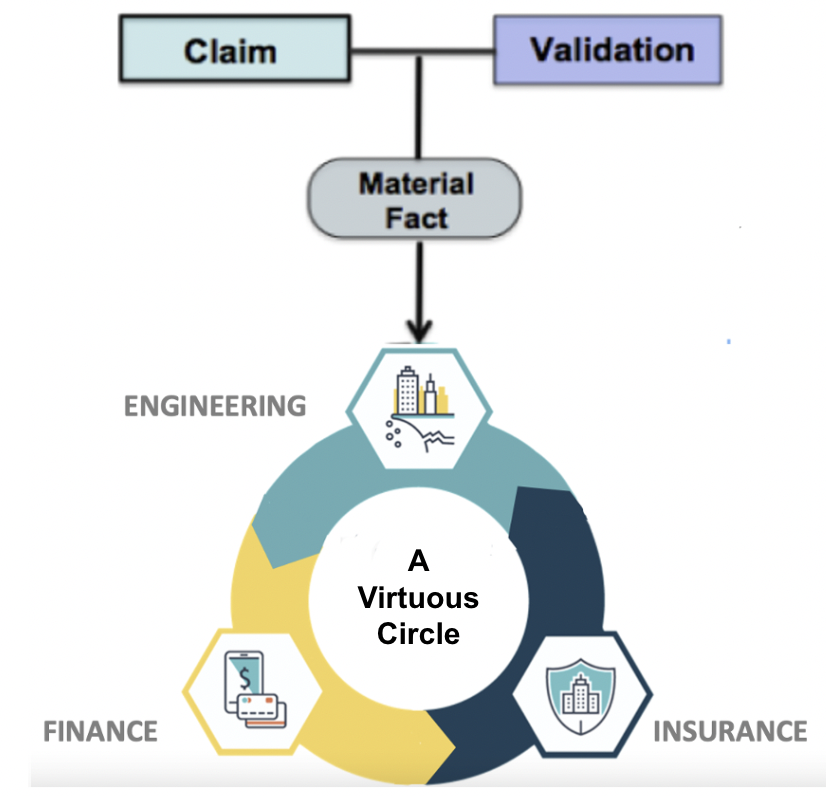 The hallmark of a great society is the ability to capitalize it’s needs, not it’s arbitrage opportunities. The Highest and Best Use for Blockchain Technology must be to reduce the cost of capital by decentralizing risk, not necessarily money…yet
The hallmark of a great society is the ability to capitalize it’s needs, not it’s arbitrage opportunities. The Highest and Best Use for Blockchain Technology must be to reduce the cost of capital by decentralizing risk, not necessarily money…yet
Blockchain technology carries a promise of great opportunity, efficiency, and fairness in business operations and governance for an entire struggling planet. If that is true, then Blockchain technology should be integrated broadly and uniformly across society and within as many existing institutions as possible. If that is true, then Blockchain development should not be the exclusive domain of a single sector, such as banking. Nor should Blockchain development reflect priorities of highest ROI from VC start-ups. Likewise, purely Decentralized Autonomous Organizations (DAOs) may carry the risk of operating in an extralegal sector without legal recourse, thereby increasing net volatility, not decreasing it.
A different track is required.
The primary objective of Blockchain technology must be to reduce the cost of capital by decentralizing risk, not necessarily money. The highest and best use for blockchain technology is therefore insurance, not necessarily banking. In doing so, blockchain innovation can then be applied broadly, evenly, and intentionally across the economy. This makes sense because when building anything complex or important, one logical piece needs to go in front of the next logical piece regardless of it’s individual ROI, because the collective ROI is the true basis of valuation. If people tried to build an airplane in the same manner we are now trying to build decentralized economics, a few may benefit, but an air transportation system, as a whole, would be tragically constrained.
We have seen this before.
Many of the issues currently propping up the narrative to the Blockchain phenomenon were also present during the time of this author’s participation in the NAFTA negotiations. Anyone who was around in the early 1990’s may remember the mantra of modern globalization was that decentralized markets were good and centralized markets were bad. The mathematics supporting the efficiency of free trade models such as the Theory of Comparative Advantage were, and still are, bullet proof. So what happened?
Unfortunately, decentralized markets were administered unevenly, disproportionately, and only partially insurable, at best. The act of trying to control a decentralized market eliminated many of the benefits of having one. Today, we face a similar peril, except we are playing with a far more powerful technology promising exponential efficiency, or exponential deficiency. Don’t let the pundits fool you. It can go either way.
The difference today is that we also have the knowledge, foresight, a technological tool kit, and profound responsibility to get it right this time.
Let’s begin.
The place to start developing blockchain technology is through a consortium of Insurance and Professional Engineering institutions for the creation of relevant infrastructure and the physical derivatives upon which everyone utterly depends. This includes renewable energy, clean air, safe water, transportation systems, health and welfare, housing, building systems, computer networks, etc. After all, bitcoins aren’t worth a whole lot when the power goes down.
Infrastructure projects, and all their beneficiary derivatives, require financial institutions that can bridge the capitalization gap between the inception of a project and revenue from the project. This period of time is rife with peril because the “money and title” precedes the delivery of the physical asset. The cost of capital is directly proportional to the risk associated with project delivery. Wherever the insurance industry is capable of pooling project risks, the cost of capital will fall precipitously. The insurance industry is therefore an imperative component to this objective. Banking is relatively simple, accounts can be cleared with a placeholder currency; a token, if you will.
Herein lie both the challenge and the opportunity facing Insurance and Engineering institutions related to Blockchain Technology:
First, as with all new technology, we need to recognize that society will reorganize itself around Blockchain Technology. We need to provide hundreds of millions of entrepreneurs and citizens the support systems with which to do so.
Second, if each component part of the blockchain system is insurable, so too should the entire system. We need to insure and reinsure each individual components of a blockchain business system(s) in order to lower its cost of capital.
Finally, once insurable, each component part of the new economy will have the same cost of capital as any other part. The relative value of an investment will therefore be ordered in time — the most important and valuable piece is the one that goes next in the critical path. This is how things get built.
Taken together, Insurance and Engineering are sufficiently disintermediated from short-term objectives and are ideally suited for the long game. Together, they can bridge the capitalization gap upon which everyone can then cross. They provide outcomes in the physical world that are essential to everyone. Together, they can deliver the projects that are most important — the ones that come next as we navigate our critical path into the future.



 The hallmark of a great society is the ability to capitalize it’s needs, not it’s arbitrage opportunities. The Highest and Best Use for Blockchain Technology must be to reduce the cost of capital by decentralizing risk, not necessarily money…yet
The hallmark of a great society is the ability to capitalize it’s needs, not it’s arbitrage opportunities. The Highest and Best Use for Blockchain Technology must be to reduce the cost of capital by decentralizing risk, not necessarily money…yet